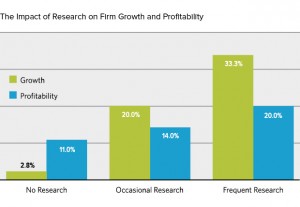While the visual design and aesthetic of a website is often noticed first, there are a lot of equally important factors working behind the scene that ultimately play a role in the “success” of a firm’s website.

Design matters
Make no mistake, design does matter! It’s important that your website visually sets you apart from the competition and helps to form a positive and respectable impression in the minds of your visitors. Users will land on your website and instantly form opinions about your website and your firm based primarily on design and aesthetics. The Web of Science did research on how quickly users form those opinions and concluded that it takes merely 50 milliseconds—the blink of an eye—for visitors to form an opinion. Furthermore, research from Stanford University found that 75% of users admit to making judgments about a firm’s credibility based solely on the design of their website.
But design alone isn’t enough
Beautiful, differentiating design—while essential—is only one of many essential components of a high-performing website. And while the design of a website can often receive the most energy and emphasis from clients during the development process, it’s important to view the website through a holistic lens. The design of a website is only the tip of the iceberg, and there are many other important factors to give attention to.
Content is the reason people visit your website
It’s not an overstatement to say that the only reason people visit your website is the content. While design can and should support the content and lead to a positive user experience, it’s important to remember that people are there for the content. A well-designed and attractive website without the right content might look nice, but it won’t meet the needs of your users.
With that in mind, your website needs first and foremost a content strategy and well-defined information architecture. This involves an in-depth understanding of your target audience and key stakeholders, then developing content around the informational needs of each of those groups. Once a content strategy is in place, design should be approached content-first.
User experience helps visitors find what they’re looking for
User Experience (UX) is simply defined as the interaction (or experience) a user has with a website. While design plays a role, effective UX is much more than a creative exercise. From a planning perspective, UX is typically defined in wireframes, but every aspect of the web design and development process—from wireframing to copywriting to design to programming—affects the user experience.
The objective of UX is perhaps most simply conveyed by the title and premise of Steve Krug’s book “Don’t Make Me Think.” A user should never have to learn to use your website. It should be intuitive and easy for them to find exactly what they’re looking for, regardless of the device they’re using or their familiarity with your website. In other words, it shouldn’t feel like a scavenger hunt, nor should they have to learn how to use your website. UX plays a critical role in making that happen.
Quality development makes it function
Without question, development is the backbone of a website. You can get all the other things right, but without solid development that brings your planning, content, design and user experience to life, your website will fall flat on your goals and objectives.
Quality code ensures a number of critical factors, including:
- Usability and accessibility
- Mobile-friendliness using responsive design
- Minimal page-load speeds
- Cross-browser compatibility
- Search engine optimization
- Maintainability
A robust content management system makes it easy to manage
Having the ability to update and control virtually every word and image on your website—easily and quickly—is essential. And while it’s important to choose the CMS platform (e.g. WordPress, Drupal, ExpressionEngine, Sitecore, etc.) that is best suited for your specific needs and application, having a robust CMS is about more than just the selected platform. Many marketers assume that each installation of a CMS will function the same on the back-end regardless of who develops the website. However, the back-end design of the CMS interface often varies about as much as the front-end design.
So it’s important to be comfortable not just with the desired CMS platform, but also the abilities and development approach of the agency that you partner with on your website. Here are a few characteristics of a robust CMS implementation:
- Intuitive and easy-to-use by non-technical staff
- Won’t require users to know HTML or CSS
- Reduces the possibility of errors
- Provides the ability to easily add new pages and content to the existing architecture
- Allows users to edit as much of the site’s content as realistically possible
Advanced analytics and/or marketing automation help you measure success and integrate with your other marketing efforts
It’s not enough to simply know how many people visit your website, how long they stay and what pages are most popular (though it’s helpful to know these things). You need to go beyond basic web analytics to get real marketing and sales intelligence that will boost business development. So to really understand how your website is performing and get the most from your investment, advanced web analytics or ideally marketing automation software is required.
Website visitor tracking can provide real-time intelligence about a lead’s interests, behaviors and sales-readiness, and allows your business development staff to have a much more targeted and relevant conversation with prospects and clients. Additionally, it’s important to understand at a deeper level how your website content is performing. You can measure this in several ways, including call-to-action clickthrough rate, landing page A/B test results or Google Analytics’ goal funnels.
Get the picture?
Design does matter—a lot. But design alone is just the tip of the website iceberg. When designing, developing or even maintaining your firm’s website, it’s important to have a holistic perspective. Understanding that many of the most crucial components, including the ones we’ve just discussed, are beneath the surface.
Digital & Social Articles on Business 2 Community(116)






